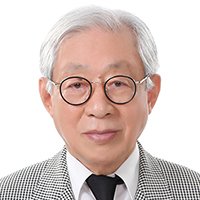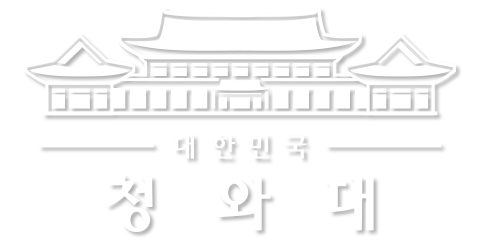이 웹사이트는 제19대 대통령 임기 종료에 따라 대통령기록관이 「대통령기록물 관리에 관한 법률」에 의해 이관받아 서비스하는 대통령기록물입니다. 자료의 열람만 가능하며 수정 · 추가 · 삭제는 불가능합니다.
다만, 「개인정보보호법」에 의하여 개인의 정보를 보호받기 원하시는 분은 관련 내용(요청자, 요청내용, 연락처, 글위치)을 대통령 웹기록물 담당자(044-211-2253)에게 요청해 주시면 신속히 검토하여 조치해 드리겠습니다. 감사합니다.
MEDIA
Preparing for the next 100 years under the mindset of the March First Independence Movement
The March First Independence Movement was a nonviolent peace movement that championed Korean independence from Japanese colonial rule. This milestone in Korean history should be shared with everyone around the globe. To mark the movement's centennial anniversary and emphasize its rightful place in world history, Korea.net presents an article about three non-Koreans who helped Korea’s march toward independence written by Han Wan-Sang, chairperson of the Presidential Commission on the Centennial Anniversary of the March First Independence Movement and the Korean Provisional Government.

By Han Wan-Sang
Chairperson of the Presidential Commission on the Centennial Anniversary of the March 1st Independence Movement and the Korean Provisional Government
Please allow me to extend my greetings to everyone around the globe who loves the Republic of Korea!
In the early 19th century, imperialism swept leading countries in Europe as well as East Asia, where Japan became an emerging military power. The Japanese mobilized their army to force the Korean Empire to sign the 1905 Protectorate Treaty, also known as the Eulsa Unwilling Treaty, to deprive the empire of its diplomatic sovereignty. In 1910, Japan forcibly annexed the Korean Peninsula as a colony and ruled the region with an iron fist.
In addition to efforts by Koreans themselves, three non-Koreans also made major contributions to the national drive toward independence.
Frank William Schofield (1889-1970) was a medical doctor, educator and missionary from Canada who arrived in Korea in 1916 to teach medicine. Despite suffering oppression from the Japanese colonial government, he strived to raise international awareness of Korea’s continued fight against Japanese colonial rule and the torture of and brutality toward Korean independence fighters.
Schofield wages his crusade by writing contributing articles to media within Korea and overseas and delivered lectures across the country. After returning to Canada in 1920, he continued to criticize Japanese brutality in Korea and helped Koreans fight for independence.
George Lewis Shaw (1880-1943), an English businessman with an Irish background who ran a trading company in Dandong, China, assisted the Korean Provisional Government to set up a transportation affairs bureau. He actively supported Korean independence fighters by hiding and delivering weapons, producing publications and raising funds for their cause.
Tatsuji Fuse (1880-1953) was a Japanese human rights lawyer who refused to support his country’s occupation of the Korean Peninsula. He fought for Korea's independence and human rights, defending Koreans involved in cases related to independence movements. In the 1930s, he was disbarred from Japan three times and imprisoned twice.
How noble that these three individuals sacrificed comfortable lives despite having no direct involvement with the country to choose the dangerous path of fighting for Korean independence.
As I mentioned earlier, Koreans began a variety of random or organized movements in and out of the country to regain their national sovereignty from Japan. The most famous of these was the March First Independence Movement of 1919, a historical event not just in Korea but also the world.
If I had to describe this movement in one sentence, I would say a nonviolent peace movement that occurred in 1919. This event was truly based on a universal spirit of humankind.
Around 1919, not a single country had staged a popular movement for anti-imperialism in a peaceful, nonviolent manner. In 1917, the Bolshevik Revolution in Russia saw blood spilled when the working class in their struggle resorted to murdering the upper class.
Two years later on the Korean Peninsula, more than two million Koreans, accounting for more than ten percent of the country's population of 17 million at the time, marched in a nonviolent, peaceful demonstration and demanded independence in the face of heavily armed Japanese police.
A hundred years have been passed since the March First Independence Movement took place.
Considering that movements toward neo-imperialism still occur in many advanced economies, the movement's spirit must be spread and shared with not only Koreans but also people around the globe.
This movement using peaceful resistance featured people espousing the values of independence, peace, democracy and human rights. Figures from all walks of life took part regardless of age or sex like youths, women, religious leaders, children, laborers and city dwellers.
Ethnic Koreans throughout the world spanning five oceans and six continents united for this cause, shouting and fighting together for the same dream.
The movement was a melting pot of independence and freedom, a loud cry heralding the desire to usher in an era of democracy and human rights, and a great bell of the times that rang for justice, love for humankind and pacifism throughout the world.
The movement did not immediately bring independence to the Korean Peninsula but its major outcome was the establishment of the Korean Provisional Government.
The Provisional Charter of the Republic of Korea declared the country a democratic republic and stipulated that national sovereignty shall reside in the people. Ending many years of monarchial and colonial rule, the charter set the foundation for the modern Korea of today.
Despite the end of Japanese colonial rule after World War II, Korea was unable to be reborn as a bona fide independent country due to the influence of world powers and the Cold War. The division of the peninsula in 1953 was a national tragedy that continues to the present day.
Yet the spirit embedded in the March First Independence Movement helped Korea push the wheels of industrialization and democratization and write a new chapter in the country's history.
Transcending time and space, the movement still flows through the hearts of the Korean people and remains young and green, creating a solid basis for the country’s future.
The seeds of peace are finally budding on the frozen soil of the Korean Peninsula. When the seeds grow, they will turn into trees full of leaves lasting for more than 100 years. When the trees bloom, their leaves will never wither. This is analogous to the new century of prosperity and world peace that will be opened on the Korean Peninsula for future generations.
The 21st century has witnessed movements of going backward or "Retrotopia" can be witnessed from many places around the world.
Despite the emergence of movements worldwide that have resulted in severe political divisions, a truly meaningful and historical task is to reflect on the spirit of nonviolence, peace and democracy embedded in the March First Independence Movement.
Even after 100 years, this movement remains an important event that offers important lessons to contemplate and learn from for all people worldwide pursuing the values of freedom, equality, human rights, welfare and peace.
I sincerely hope that we can share Korea's experience during the movement to offer hope and courage to all struggling countries and people of the world.



